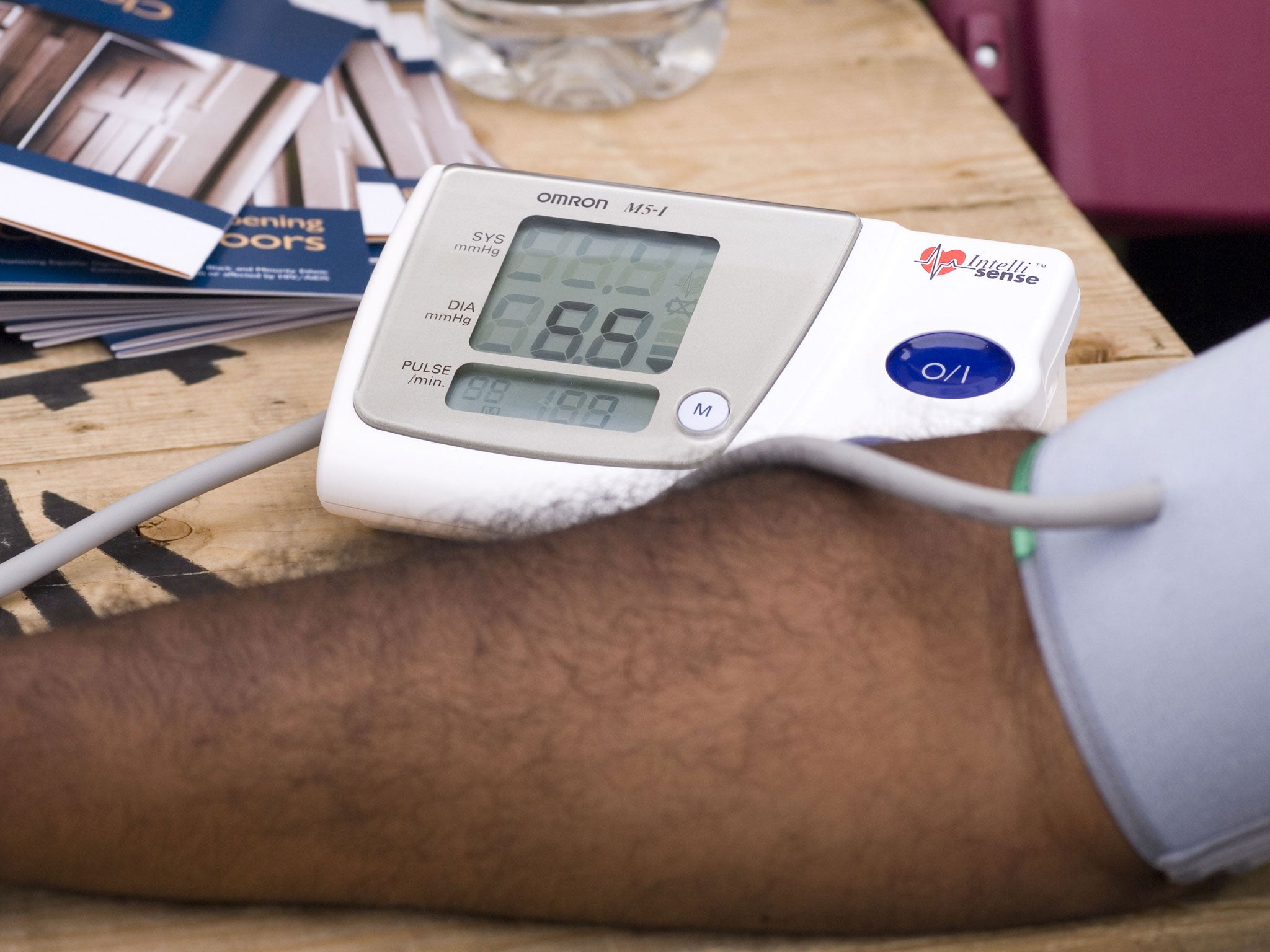'World's biggest silent killer': Breakthrough could revolutionise treatment of blood pressure
Discovery will help patients who do not respond well to various treatments

Removing one of the smallest organs in the human body could dramatically reduce blood pressure in patients who do not respond to medicines, potentially revolutionising treatments for thousands.
Tiny organs, no larger than a grain of rice, called the carotid bodies, located near the artery that carries blood to the head and neck, were found to play a major role in causing and maintaining high levels of blood pressure.
Although the study, carried out by researchers at the University of Bristol and published in Nature Communications, looked at models of high blood pressure in rats, their findings were so significant that they have already led to a human clinical trial in 20 patients, which will be completed early next year.
High blood pressure, or hypertension, affects nearly a third of people in the UK and is known as “the silent killer” because thousands of patients do not know they have the condition. Large numbers of patients do not respond well to the various drug treatments, such as ACE inhibitors and Beta-blockers, that can be prescribed to keep blood pressure low, and still more find it difficult to keep up their medicines regime because of common side effects.
Professor Julian Paton, from Bristol’s School of Physiology and Pharmacology, said that the discovery of the carotid bodies’ role in causing high blood pressure was unexpected.
“We knew that these tiny organs behaved differently in conditions of hypertension but had absolutely no idea that they contributed so massively to the generation of high blood pressure; this is really most exciting,” he said.
The two carotid bodies are located at the point where the carotid artery, which carries blood from the heart, splits into two separate arteries that take blood to the brain and other parts of the head. Its function is to detect changes in levels of oxygen and carbon dioxide in the blood. If oxygen levels drop, for instance when you hold your breath, the carotid body acts as an alarm, sending a message to the brain, which stimulates a reflex nervous response, increasing the rate of breathing and raising blood pressure.
In cases of high blood pressure, it appeared that the carotid artery was overactive. Although the exact cause is not known, it may be that it is deprived of oxygen or inflamed in some way, Prof Paton said, leading to it sending a message to the brain to keep blood pressure constantly high. In human trials, only one carotid body would be removed, Prof Paton said. It is hoped this will reduce blood pressure, while also maintaining the carotid body’s function in regulating the body’s response to low oxygen levels in the blood.
Dr Tim Chico, senior clinical lecturer and honorary consultant cardiologist at the University of Sheffield and Sheffield Teaching Hospitals, said that the discovery could be “an important step towards a surgical procedure to be used alongside, or even replace drug treatment.”
Professor Jeremy Pearson, associate medical director at the British Heart Foundation, which part-funded the study, said: “For around one in fifty people with high blood pressure, taking pills does not help their condition…This breakthrough has already kicked-off a small trial to find out whether this treatment is safe and effective in people with high blood pressure resistant to medication. This potential new treatment has real promise to help this hard-to-treat group of patients.”
Join our commenting forum
Join thought-provoking conversations, follow other Independent readers and see their replies
Comments